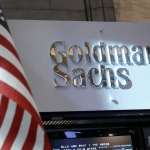Giles Coghlan, Chief Currency Analyst at HYCM , explains what investors can expect from the markets this winter.
So far, this year has been anything but typical. As nations have attempted to regain their footing after a difficult 19 months or so, inflation fears and spiralling energy prices have cast a very dark shadow on worldwide economic recoveries.
Even as world leaders prepare to convene for the UN Climate Change Conference of the Parties (COP26), global fossil fuel prices are soaring. While oil prices have hit multi-year highs in the US, with Brent crude sitting at $86 a barrel, the situation in Europe grows grim, as crude and gas have crept up to near all-time highs. As we approach the colder months, where demand for these commodities usually tends to rise in line with changing weather conditions, many traders and investors may be wondering if we are in for a particularly volatile winter. So, what factors should individuals consider when weighing up their investment activities?
‘Stagflation’ may cast a dark shadow
One aspect which may exacerbate usual seasonal patterns is the fact that we are currently in a ‘stagflationary’ environment – a deadly combination of rising prices, rising wages, low productivity, low growth, and rising unemployment. No doubt, this will be a pressing concern for investors given recent CPI data, as a prolonged period of inflation may drive central banks to raise their interest rates. What’s more, energy rationing and contracting consumer budgets may also spell trouble for the economy, stifling global growth. The result of all this? Energy prices may pose a road bump on the path to post-Covid recovery.
As such, I would advise traders and investors to watch central bank meetings closely. Not only will the minutes of monetary policy committee meetings give a direct insight into the thoughts of leading economists on these issues, but they will also provide a forecast of where inflation is headed.
At the moment, inflation figures have steadied somewhat in the UK, where the energy crisis originated, to 3.1% in annual terms for September. That said, the newly appointed chief economist at the Bank of England (BoE) Huw Pill has offered some words of caution, warning that inflation figures may top 5% by early next year – which could prove problematic for a central bank with an inflation target of 2%. Now, traders and investors are expecting a potential interest rate rise from the BoE at their next meeting on 4 November. Up until now, the Federal Reserve and the European Central bank are months behind taking such action.
Investors should also consider the fact that, generally speaking, oil tends to have a significant effect on currencies, as it has a strong inflationary component. In effect, this means that any volatility in oil prices will result in serious implications for the FX world. While central figures maintain that, like inflation, the energy crisis is “transitory”, I would still advise investors to keep their ears to the ground for any rumblings about oil.
COP26 will mark a shift to cleaner energy
Additionally, the upcoming COP26 summit on 31 October will contribute to something of a shift where usual seasonal patterns are concerned. Given that the recent energy crunch has marked a turn back to ‘dirtier’ sources of energy like thermal coal and oil, traders and investors can expect world leaders to recommit to old pledges to reduce their carbon emissions and accelerate these plans. While such efforts may seem like a given, the pace at which this transition occurs should provide traders and investors with some more nuance; so too will the inevitable opportunities that come along with an event like this. The summit will likely result in a new push for greener investments – clean energy sources, as well as the technology required to advance, transmit and store it, will provide new avenues to investors. Here, though, it is important to note that investing in any emerging market, and particularly energy, can come with some risks.
‘Tis the season
While most investors are no strangers to the fact that cold weather conditions tend to result in higher energy prices – particularly in the winter months – worsening weather conditions could exacerbate this trend. At the moment, meteorologists are predicting that the UK is in for a bitter winter, which could result in further gas shortages and supply bottlenecks.
In short, it seems like this year we can expect normal seasonal patterns to be amplified by the energy crisis, as well as other extraneous factors. While none of this is certain as yet, traders and investors should ensure that they anticipate any market shocks.
High Risk Investment Warning: CFDs are complex instruments and come with a high risk of losing money rapidly due to leverage. 73% of retail investor accounts lose money when trading CFDs with this provider. You should consider whether you understand how CFDs work and whether you can afford to take the high risk of losing your money. For more information, please refer to HYCM’s Risk Disclosure.
About the author: Giles Coghlan is Chief Currency Analyst, HYCM – an online provider of forex and Contracts for Difference (CFDs) trading services for both retail and institutional traders. HYCM is regulated by the internationally recognized financial regulator FCA. HYCM is backed by the Henyep Capital Markets Group established in 1977 with investments in property, financial services, charity, and education. The Group via its relevant subsidiaries have representations in Hong Kong, the United Kingdom, Dubai, and Cyprus.













